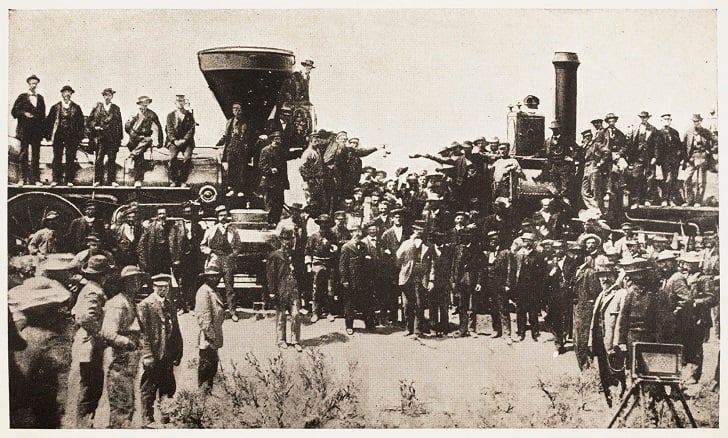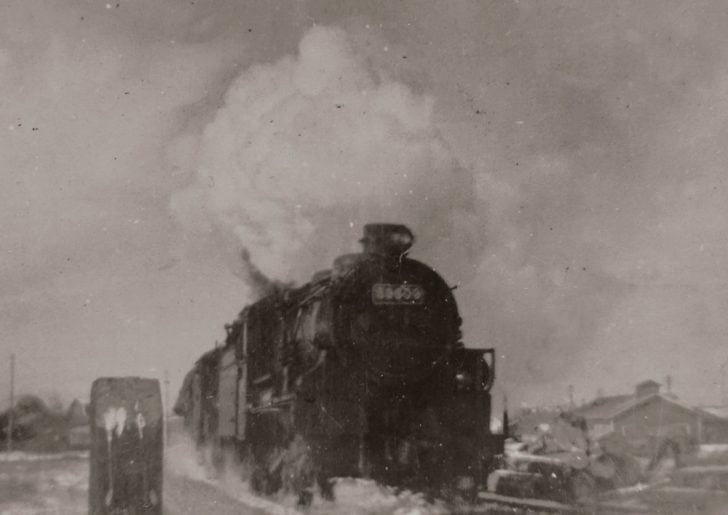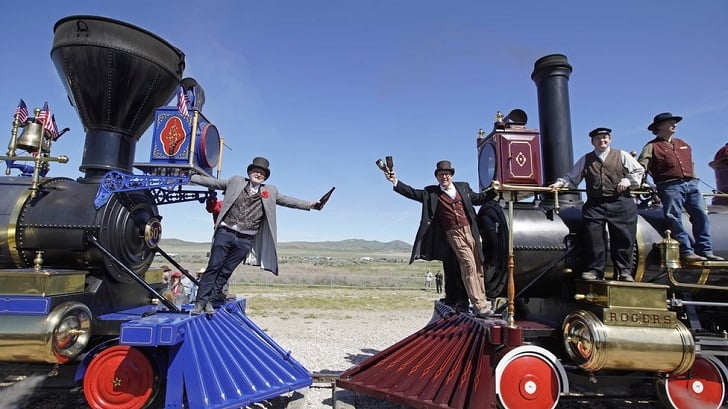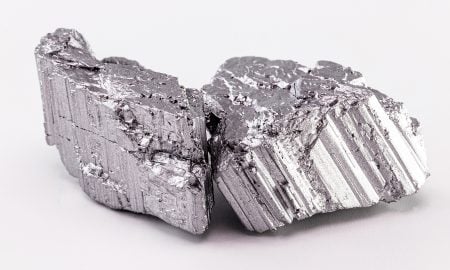
How the Transcontinental Railroad Forever Altered America

The construction of the Transcontinental Railroad is one of the most transformative moments in American history. Completed in 1869, this monumental feat of engineering forever altered the economic, social, and cultural landscape of the United States.
Connecting the East Coast with the West Coast, the railroad was not merely a means of transportation; it was a catalyst for progress that shaped the nation’s destiny in ways that continue to resonate today.
Revolutionizing Transportation and Commerce
Before the Transcontinental Railroad, travel across the continent was a difficult and time-consuming endeavour. Journeys that previously took months by wagon train or ship could now be completed in a matter of days.
The railroad drastically reduced travel times, allowing for faster movement of people and goods. The expansion of markets, facilitated by the swift action of resources, led to an unprecedented economic boom.

BBC/ GETTY IMAGES | The idea of a Transcontinental Railroad dated back to the 1830s
Raw materials from the West, such as timber, minerals, and agricultural products, could now be transported efficiently to the Eastern markets. Conversely, manufactured goods from the East could reach consumers in the West with greater speed and lower costs. This connectivity led to the growth of industries and major cities along the railroad route, as once remote areas became hubs of economic activity.
Unifying a Vast Nation
The Transcontinental Railroad played a crucial role in unifying the vast expanse of the United States. The railroad’s completion symbolically joined the East and West, representing a tangible link between the settled coastal regions and the still-developing interior. The sense of connection and shared destiny among Americans on either side of the country was reinforced by this remarkable achievement.
The railroad also helped break down regional isolation and fostered a sense of national identity. People from different parts of the country could now travel and communicate more efficiently, exchanging ideas, cultures, and experiences. This newfound unity would have a lasting impact on the nation’s politics, economy, and social fabric.
The boom of Urbanization and Immigration
As the Transcontinental Railroad opened up new opportunities for trade and commerce, it also increased urbanization. The cities that sprouted along the railroad routes quickly became bustling centres of trade, finance, and industry. Chicago, for instance, transformed into a vital railroad hub, solidifying its position as a major economic player in the nation.

Suzy Hazelwood/ Pexels | The transcontinental railroad cost roughly $100 million
The influx of immigrants looking for work and a better life also intensified due to the accessibility provided by the railroad. The lure of steady employment and the promise of a brighter future drew people worldwide, further enriching the nation’s cultural diversity and contributing to its overall growth.
Environmental Impact and Western Expansion
While the Transcontinental Railroad brought undeniable progress, it also carried environmental consequences. The railroad construction required massive resources, including timber for ties and fuel. In some cases, the reckless exploitation of natural resources had detrimental effects on ecosystems. Forests were cleared, and landscapes were forever altered to accommodate the railroad’s needs.
Moreover, the railroad accelerated the settlement of the American West. It became easier for settlers to move westward and establish communities, leading to increased pressure on land and resources. This expansion had complex effects on Indigenous populations, leading to conflicts over territory and resources that would have long-lasting implications.
The Role of Government and Technological Innovation
The construction of the Transcontinental Railroad was not solely a triumph of engineering; it was also a testament to the role of government support and technological advancement.
The federal government provided land grants and financial incentives to the railroad companies, spurring their efforts and making the ambitious project financially viable. This model of public-private collaboration would influence future infrastructure development in the country.

BBC/ GETTY IMAGES | The workers who built the transcontinental railroad came from a wide range of backgrounds and ethnicity.
Technological innovation played a pivotal role in making the railroad a reality. The challenges of diverse terrains and harsh environments pushed engineers to develop new construction techniques and equipment. Using steam-powered machinery, steel tracks, and efficient surveying methods paved the way for more ambitious engineering projects in the future.
Legacy and Lessons
The Transcontinental Railroad left an indelible mark on the United States, shaping its economy, society, and culture. It accelerated the pace of industrialization, increased mobility, and enabled the rapid exchange of ideas and resources. However, its legacy is not without complexities, as it also led to environmental changes, conflicts, and displacement.
The story of the Transcontinental Railroad serves as a reminder of the power of human innovation and determination. It shows how ambitious infrastructure projects can drive progress and create new possibilities. At the same time, it underscores the importance of considering the broader impacts of such projects, including environmental sustainability and the well-being of marginalized communities.
More in Buzz
-
`
Dwayne ‘The Rock’ Johnson’s Business Ventures
When you think of Dwayne ‘The Rock’ Johnson, the first thing that may come to mind is his impressive career in...
December 5, 2023 -
`
Sam Bankman-Fried’s Secret Celebrity Network Exposed
In the glitzy world of cryptocurrencies, where fortunes can be made and lost instantly, having connections to the stars can make...
November 29, 2023 -
`
Are Rare Earth Elements Really So Rare?
When we hear the term “rare earth elements,” our minds often conjure up images of elusive and scarce materials. After all,...
November 20, 2023 -
`
Exploring America’s Top Tier Hotels
For those who crave the finer things in life, the United States offers a treasure trove of luxurious hotels that elevate...
November 19, 2023 -
`
Where Does Elon Musk Live? Let’s Find Out!
Elon Musk, the billionaire entrepreneur and visionary behind Tesla and SpaceX, is known for pushing the boundaries of technology and innovation....
November 10, 2023 -
`
The Origin of Elon Musk’s Feud With Bill Gates
In the world of tech titans and billionaire visionaries, it’s not uncommon for rivalries and feuds to develop. One of the...
November 1, 2023 -
`
Wall Street Downgrade VS. Upgrade: Which One Is Better for Your Money?
“Bad news sells.” It is an age-old adage we have all heard before. In the world of finance, the principle often...
October 28, 2023 -
`
Guitar Smashed By Nirvana’s Kurt Cobain Sells for Nearly $600k!
In the world of rock ‘n’ roll, legends are born from the music and the artifacts left behind. One such artifact,...
October 21, 2023 -
`
Dwayne “The Rock” Johnson’s Plastic Surgery Journey
Dwayne Johnson, globally celebrated as “The Rock,” is synonymous with wrestling and Hollywood stardom. With a physique chiseled from relentless workouts...
October 10, 2023















You must be logged in to post a comment Login